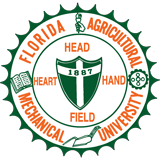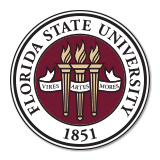
Mechanical engineering faculty member Unnikrishnan Sasidharan Nair at the FAMU-FSU College of Engineering in Tallahassee, Florida.
Unnikrishnan Sasidharan Nair, an assistant professor in mechanical engineering at the FAMU-FSU College of Engineering, received the 2024 Young Investigator Program (YIP)Award from the Office of Naval Research (ONR) in the Department of Defense for his work in aerodynamics. He is one of 24 recipients and will receive funding to conduct innovative scientific research for the Department of Navy.
ONR recognizes and supports academic scientists and engineers early who show exceptional promise for doing creative research early in their careers. The objective is to attract outstanding faculty members to the Department of the Navy’s research program to support and encourage their teaching and research careers. The 2024 awardees were chosen from a pool of 220 applicants.
Nair’s work, “Dynamics of Shock-Wave/Boundary-Layer Interactions over Axisymmetric Bodies,” will receive up to $559,062 for three years through Florida State University. YIP awards support postdoctoral and graduate student stipends, scholarships, laboratory equipment and other research-related expenses.
Nair is the lead researcher at the college’s Computational Aero-Sciences Laboratory (CASL) in the Florida Center for Advance Aero-Propulsion (FCAAP). The group focuses on state-of-the-art simulations and theory of fluid mechanics associated with aviation.
“We want to understand the flow physics that governs supersonic flows and shock waves and its interaction with geometrical elements relevant to aircraft design,” Nair said. “Much of our understanding of shock-wave/boundary-layer (SWBLI) interactions comes from simplistic two-dimensional approximations, but supersonic flight applications require new campaigns that account for three-dimensionality and curvature effects in the zone where the shock-wave hits the surface of the vehicle.”
Nair’s group is using high-fidelity simulations to study the issue. They are advancing the fundamental fluid science of SWBLI and the insights gained from the effort can potentially improve the safety, efficiency, stability, and control of supersonic aircraft.
“We utilize FSU supercomputers to simulate these challenging flow problems,” Nair said. “Our objective is to improve designs and efficiency aspects and achieve noise reduction in aircraft systems.”
RELATED ARTICLES
Combining theoretical, experimental and computational aerodynamics into one dynamic locale
A social equation: Engineering researcher uses network science to understand how materials work
Engineering researcher Neda Yaghoobian receives NSF CAREER Award for fire science research

